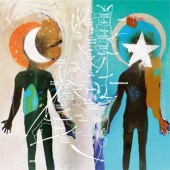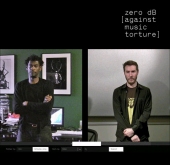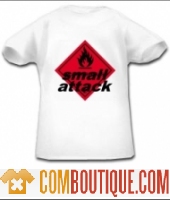Massive Attack Collaborators Neil Davidge and Euan Dickson on Impulsive Recording (EQ, March 2010)
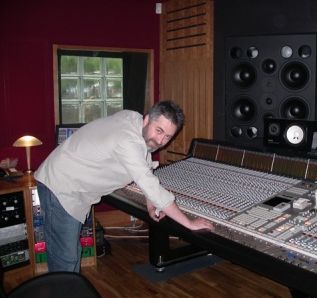
For their fifth album, the Bristol, UK-based electronic duo Massive Attack (3D and Daddy G) enlisted a new batch of veteran vocalists, including Damon Albarn (Gorillaz, Blur), Hope Sandoval (Mazzy Star), Tunde Adebimpe (TV on the Radio), and Martina Topley-Bird, as well as longtime collaborator Horace Andy. Meanwhile, Adrian Utley (Portishead) played guitar on a track, and DFA’s Tim Goldsworthy also contributed to a handful of songs.
But aside from 3D (Robert Del Naja) and Daddy G (Grant Marshall), the people most involved with the day-to-day process of creating Heligoland [Virgin] were longtime Massive Attack producer Neil Davidge and engineer Euan Dickson, who helped bring the album—released last month—to fruition. Here, Davidge and Dickson discuss circumventing creative struggles, recording constantly, restricting effects, and making music for 46 speakers.
When you started working on the album with 3D and Daddy G, what was your approach?
Davidge: I spent far too long in the studio making [Massive Attack’s last album,] 100th Window, to a point it wasn’t fun anymore. For me personally, part of the reason I wanted this album to be simpler and more organic was I didn’t want to make an album like that again. I felt we achieved everything we wanted on 100th Window and it was time to change again. I wanted the mistakes, the scrappy bits, the textures; I didn’t want to touch every millimeter of multitrack. I wanted to let it breathe, let it be what it was meant to be—not to let there be the paranoia that enters your head when you know you can take every single millisecond and check it over, make it fit for consumption. It can get you to a point you don’t know what you are looking for anymore. I wanted this album to be a gut album, one where we didn’t struggle ever. We took a long time making it not because I was spending months on single tracks, but because we were looking for the energy and inspiration.
Can you walk through the step-by-step process of creating a track on the album?
Davidge: I played everything on “Psyche,” programmed it, and gave the track to Martina. She put this sketch vocal on it and everyone loved it, felt there was no point in doing more to it. I’ve got a little classical guitar I play with at home just to get ideas, and I just started playing these little licks. I’m just not a good enough guitarist to play them fluidly, so I would just lay in two parts and start looping around those and slowly and painfully build up a chord structure. I didn’t want a traditional chorus and verse and flow to this tune; I just wanted it to start and evolve into something different. And the link was the arpeggio idea: It was dead simple. I’ve got a Blue Bottle value mic, which I use for quite a lot of stuff, often for Robert’s vocals, so I tracked that up and chopped it up in Pro Tools. It was Robert’s idea that in certain points, it should be close, in your face, and sometimes it feels like this stage curtains close again.
And I used iDrum from iZotope, which it’s great or roughing together a quick beat. Whether it iDrum or a sequence on a sampler, I’d tweak as I go, recording a long pass, and then I would find from the audio the moment that gave me a rise. And I would edit those pieces together rather than try to painfully painstakingly build the arrangement from beginning to end, all the drum changes, fills, it’s just too tedious and I lose the will to live by the end of the process. It’s software, and you need to spend a certain amount of time crunching the numbers, but as much as possible I want it organic, to play and experiment. I try to record everything in the studio. A musician can’t come in unless we’re in record. Even singers warming up, the red light is always on. It’s only hard drive space; I can wipe it afterwards if it’s a waste. But to not be in record when inspiration occurs, it’s a sacking offense.
Dickson: On “Girl I Love You,” the Horace track, the brass sounds on that I came up with and everyone was liking that. The sounds were crappy Mellotron brass samples I had on my laptop, and they formed the basis of a next step on the track. I think I did it with Novatron brass, off a sample CD, put it in Sampletron and worked it through Ableton. And I think I might have taken a bounce of the track before brass and experimented with it, and what came out of it stuck. I think it was less than a MB, the sample path. And then we recorded actual brass mixed in with it in London, then turned up the crusty Mellotron sample to make it louder.
How much did you use outboard gear versus plug-ins for this album?
Davidge: On this album everything was done in the box, very little outboard. I’ve got a pair of Distressors, and we sometimes use those on the input to take the edge off, but the mix and processing is in the box. Compression I use most of the time Bomb Factory 1176, especially for drums. Up until now we did everything on Pro Tools 6, so we waited till after the album to upgrade to HD. Though it was mixed in HD.
Dickson: We got a Waves bundle and the Sony Oxford stuff. We have an SSL G+ mixing desk, as well. But at the end it became more a glorified volume knob, which is a shame, but how it’s going for a lot of people. I think a lot of the time sound remains pretty untouched by the hardware. We’ve got a couple of old Neve preamps I like using for vocals, Neil has Focusrite stuff, but it’s mostly preamps that don’t color too much unless we want a pronounced and not subtle thing, like a Binson Echorec, run through some tubes for that kind of vibe.
Davidge: I’ve got a pair of Focusrite ISA 215 pres, an Avalon Vt-737sp, and Neve EQ/mic pres. But I do all the shaping within Pro Tools, because often Robert in particular changes his mind about things all the time. So I find the more I commit myself at the recording stage the more likely it is I will have to record the whole thing again. So I tend to record things as flat as possible to give [us] complete flexibility after the moment.
What were the preferred vocal chains for vocals?
Davidge: For Robert we’ve tried a lot of different mics for him; we used to use the Neumann U 87, but for some reason it didn’t work on this album. He’s changed the way he sings-speaks on this album. The presence on the Blue seemed to be right for where we wanted him in the track. It was not a sound we had to process that much. We tried the 147, the U 87, handheld mics, all sorts of things, but that’s the one that gets the best average response, to capture him enough that if there’s anything he’s looking for I can achieve it.
This album, he didn’t want and I didn’t want to make it too effected. The last album, 100th Window, we went overboard and everything was tweaked and edited. I went over every single sound spending days and days in the effecting stage, but this album we wanted it more organic. What I was looking for before we even started working on this album was I wanted that when we have a moment I want it to be a real moment. So when we put on the effects it really stands out as opposite to everything else which is clean, dry, simple. That was a process we ended up following. The live drums on “Babel”: It’s just one microphone in the room, dead raw. But those drums are on top of these heavily processed drums I chopped together using iDrum. And the contrast makes it work, the beautifully raw and hideously processed.
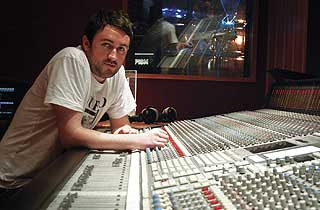
What about instrument signals?
Dickson: We got these Al Smart DI splitter boxes, so we’d take a split from the pedals to the DI and big Marshall amp stacks, stick a couple mics on that, though I think we used the amp sound with a Neumann M 147 and Earthworks SR71, as it’s a real small diaphragm condenser to have the real top end with the round warmth of the Neumann. You can really hear that on “Power By Surface” or “Rush Minute.” A lot of tracks Neil would put down guitar that was DIed and put it through Amp Farm and that’s the way it started, it captured the vibe. We didn’t want to open another can of worms.
I have Guitar Rig on my computer, and we used an Orange Tiny Terror and Fender Super Reverb, and then inspiration struck and we had a Line 6 Pod, recorded it in the live room, and that’s how it went. But I don’t think the album suffered for that.
For keyboards, we use Gigasampler, a PC set up with a lot of patches for piano sounds and strings and the Access Indigo here and there. But a lot of synths were vintage: the Solina String Ensemble, Yamaha CS70, Moog Prodigy, Mood Voyager, Juno-60. It was a mix of playing in with a spontaneous patch, then it also had a lot of MIDIing up.
We did reamp a few times with synth sounds. They often sit in the mix a bit better if you put them through an Orange 8030 amp. On Atlas Aire we’d audition lines through pedals into the valve amp and back in. But a lot of the gritty distortion vintage-ness was more Amp Farm.
Did you try out any interesting experiments in the studio?
Davidge: “Flat of the Blade,” the drums for that I programmed up for an installation that Robert and I got involved at with the Victoria and Albert Museum in London. It was an interactive installation with 46 columns of LED lights, and each column had a separate speaker, so I had to write pieces that would work for 46 speakers, something different from each, and that’s a bit of a headf**k. So the drum pattern was written for that. Every single delay, these stuttering fluttering patterns in the background, they were all around you in this grid of columns. Every hit had it’s own speaker, and it sounded incredible. I would shift the repeats individually to spread them out across the whole of the tracks, and they kept varying. There was a kind of system where sometimes they would be really diffused and at other times they would coalesce as if they were a piece of glass shattering.
http://www.eqmag.com/article/massive-attack-collaborators/March-2010/110517




